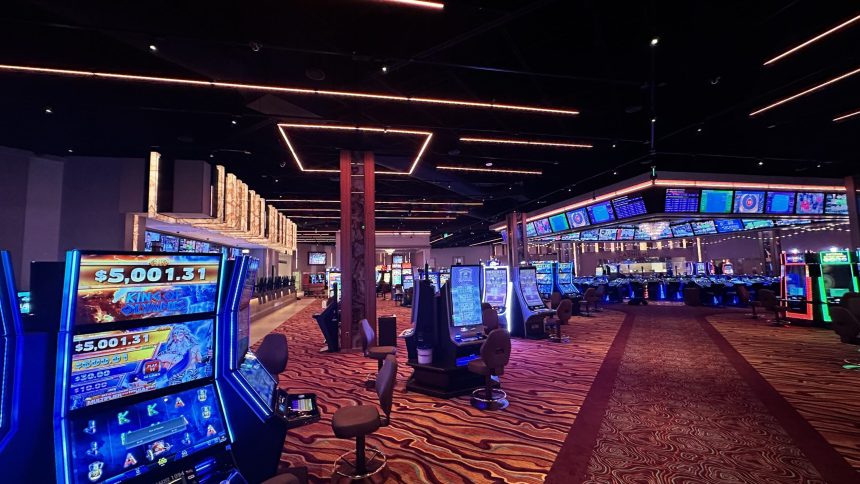Digital slot machines provide a fascinating world of immersive experiences, interesting sounds, and stunning graphics. Among the most fascinating features of these machines are the vivid, flashing lights that constantly catch players’ attention. The psychology behind these lights is more than just adornment; they are a crucial part of forming the player’s experience. The question yet stands: do these lights just generate an interesting environment or are they especially meant to affect luck? Knowing how illumination in these devices works calls for a study of psychological triggers, human perception, and the general effect on player behavior.
For decades, the game business has spent much on studies to grasp how sensory stimulation influences human decision-making. Strategic use of lights, colors, and flashing patterns keeps involvement and increases interest. Though some players think these lights increase their luck, their actual goal is to create a setting that amplifies the excitement of the game. The science underlying these visual impacts and their impact on players’ perceptions is explored in this paper.
How Lights Affect Player Involvement
Carefully designed to grab attention and keep player interest, the brilliant and dynamic lighting used in these devices Often used are colors like red, gold, and neon because they evoke excitement, riches, and fortune. These hues elicit intense emotional reactions, hence enhancing the enjoyment and excitement of the event. A feeling of satisfaction and success is produced by flashing patterns, quick brightness changes, and coordinated effects with winning results, hence strengthening the will to keep playing.
Apart from aesthetic attractiveness, lighting is essential for directing player attention. Often, a machine’s lights blink in a way that draws attention to important areas like reels, jackpot notifications, or bonus features. This simple yet powerful approach guarantees that players stay involved while still looking forward to possible victories. The total thrill is further increased by the synchronization of illumination with game sounds and animations, hence enhancing the immersive and appealing quality of the experience.
Psychological Impact Of Lighting Effects
Psychological concepts underpin much of these devices’ use of illumination. Among the most important is the idea of operant conditioning, a theory created by psychologist B.F. Skinner. This idea holds that reinforcement can affect behaviors, exactly what the lights want to accomplish. Flashing lights accompanying a win cause players’ brains to link the visual stimulation with positive reinforcement, therefore raising the probability of ongoing play.
The “near-miss effect” is one more psychological component at work. The lighting effects still turn on when players nearly win but fall short, therefore producing an illusion of success. Believing they are near a major win, this near-miss situation motivates athletes to try again. These psychological triggers taken together produce a setting in which gamers stay involved, feeling constant surges of excitement and drive to continue playing.
Do Lights Affect Perceived Luck?
Among gamers, one of the most prevalent fallacies is the idea that lights may directly affect luck. Actually, random number generators (RNGs) drive luck in these computers, hence guaranteeing fair and unpredictable results. External elements, particularly lighting effects, might therefore shape one’s view of luck.
A player could come to think they are “on a roll” if they have a run of wins followed by celebratory illumination. On the other hand, subtle or dim lighting during losses could heighten sensations of poor luck. Although these visual signals have no effect on the real likelihood of victory, they influence a player’s emotional reaction and sense of luck. This phenomenon accounts for why certain players feel more confident and involved when surrounded by bright and brilliant displays.
Lighting’s Effect On Decision-Making
Lighting affects decision-making as much as perception. Research have indicated that dynamic lighting in settings might raise excitement and energy levels, hence encouraging more risk-taking by gamers. Pulsating lights’ excitement can produce a feeling of urgency, therefore encouraging players to keep playing without overthinking their decisions.
Furthermore, to motivate particular behaviors, lighting effects are sometimes coordinated with game events. For example, the lights might get brighter to increase expectation if a player enters a bonus round. Likewise, jackpot indicators are meant to attract attention with bright, appealing lights, therefore motivating players to strive for high-reward prospects. Although they don’t change game results, these impacts influence player behaviour by means of increased excitement and involvement.
Lighting Development In Digital Slot Machines
Over the years, the design and technology of these machines have changed greatly; lighting has grown more complex and immersive. While later digital versions include LED displays, neon lighting, and even interactive touch-responsive components, early mechanical counterparts had basic flashing bulbs. Digital formats have allowed for more versatility, hence allowing game creators to design complex lighting sequences meant to improve user experience.
Differentiating games inside a gaming area is also influenced by advanced lighting technologies. To make each machine stand out, developers play with unusual themes, colors, and effects, hence attracting players to investigate fresh possibilities. Lighting effects will probably becoming increasingly more involved as gaming technology develops, hence increasing player involvement.
Responsible Gaming And Ethical Issues
Although lighting effects enhance the entertainment value of these machines, they also create ethical questions about responsible gaming. Prolonged play resulting from the mix of bright lights, interesting music, and psychological reinforcement could help to fuel some activities. Consequently, authorities have set rules to guarantee that these visual impacts do not unduly influence player conduct.
Game operators and designers are include more and more responsible gaming elements such notifications to take pauses and openness on game odds. Some areas have even restricted particular visual effects to avoid too much stimulation. Ensuring a fair and entertaining experience for all players will always be a goal as the business develops, hence balancing entertainment with ethical issues will be important.
Conclusion
A deliberately designed component meant to increase involvement, generate excitement, and shape perception is the strategic use of lighting in digital slot https://www.eatatfitz.com/menus/. Although these lights don’t change real game results or luck, they psychologically reinforce and stimulate the senses to shape the whole player experience. Every session becomes more immersive as colors, brightness, and synchronization with game events interactively grab players’ attention and maintain their interest.
Though these visual effects are quite appealing, players must understand that luck is totally arbitrary, driven by underlying technology rather than outside signals. Knowing how lighting affects these machines will enable players to approach gaming more knowledgeably and guarantee they enjoy the experience responsibly. Lighting will always be a major factor in the creation of digital game experiences as technology develops, combining creativity with enjoyment while upholding ethical norms.







